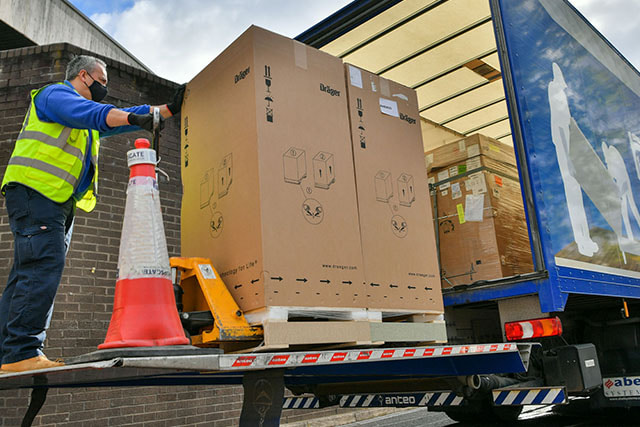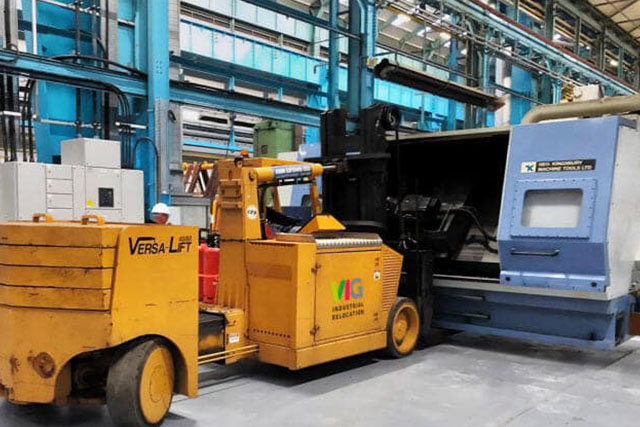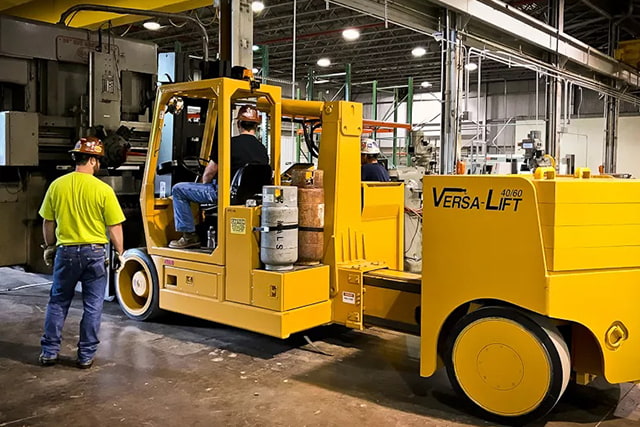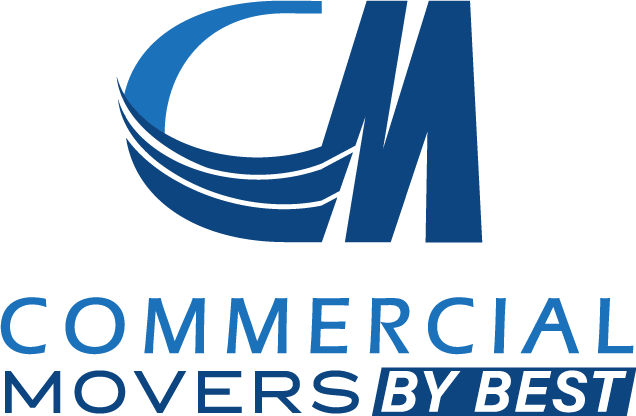Relocating medical equipment is not a task to take lightly. These devices are not only expensive, but they are also extremely sensitive and vital to patient care. An MRI machine, CT scanner, or surgical system must arrive intact, calibrated, and ready to function. This process calls for precision, experience, and the right technology.
That’s where heavy-duty machinery movers become indispensable. These large-scale industrial relocation experts offer the expertise and tools necessary to ensure that every step of the relocation is executed safely and efficiently.
Table of Contents
Key Takeaways
✔ Use advanced tools to protect sensitive equipment from shocks, static, and moisture during transport.
✔ Streamlined relocation ensures faster disassembly, transit, and reinstallation, minimizing service interruptions.
✔ Specialists are trained to comply with HIPAA, FDA, and OSHA standards to ensure legal and safe handling.
✔ Handle everything from pre-move planning to post-move setup, eliminating the need for multiple vendors.
✔ Experts protect device calibration and work directly with manufacturers to maintain equipment integrity.
✔ Hydraulic lifts, air-ride trucks, and custom rigging ensure safe handling of heavy machinery in tight or complex spaces.
✔ Comprehensive coverage reduces financial risk and adds peace of mind during high-value moves.
✔ Dedicated project managers and detailed logistics plans keep all stakeholders aligned and operations smooth.

What Are the Challenges of Moving Medical Equipment?
Relocating medical equipment involves far more than just moving bulky items from one location to another. These machines are delicate, regulated, and often essential to life-saving operations. The process demands a tailored approach that accounts for both physical logistics and regulatory compliance.
1. Weight and Size Constraints
Medical devices can be exceptionally large and heavy, making them difficult to maneuver through tight spaces or multi-level facilities.
- MRI scanners and linear accelerators can weigh several tons and require reinforced transport routes.
- Elevator and doorway limitations may necessitate partial disassembly or creative rigging solutions.
2. Fragility and Sensitivity
Even though these machines are large, many contain sensitive internal components that are vulnerable to:
- Temperature fluctuations, which can damage electronics or affect calibration.
- Vibrations and shocks, which may disrupt sensitive alignment or scanning mechanisms.
- Tilting or jarring, which can render a machine unusable or unsafe.
3. Precision Placement Needs
Many devices are not plug-and-play; they must be:
- Positioned with millimeter-level accuracy, especially imaging and radiation devices.
- Integrated with plumbing, electrical, and ventilation systems that require careful alignment and coordination with facility teams.
4. Regulatory and Compliance Challenges
Heavy-duty machinery movers are trained to work within these frameworks, minimizing legal risk and ensuring uninterrupted compliance. Medical equipment transport is heavily regulated due to patient safety and data security concerns.
- Health Insurance Portability and Accountability Act (HIPAA) compliance is crucial when transporting devices containing patient records.
- Occupational Safety and Health Administration (OSHA) standards must be followed for worker safety during disassembly and reinstallation.
- Food and Drug Administration (FDA) and state-level guidelines dictate how certain equipment types must be handled, especially those involving radiation or biological components.
5. Infrastructure Limitations
Older or smaller facilities may present additional challenges, such as:
- Narrow corridors and outdated lifts that aren’t rated for heavy loads.
- Flooring that lacks the structural integrity to bear the weight of modern machines.
- Insufficient loading zones for large transport vehicles, complicating pickup and delivery.
6. Coordination with Multiple Stakeholders
Managing these moving parts requires large-scale industrial relocation experts with experience in project management and scheduling under pressure. Medical moves often involve collaboration between:
- Hospital administrators
- Facility engineers
- Clinical technicians
- Manufacturers or third-party service vendors
Why General Movers Aren’t Enough
Relocating high-value medical equipment isn’t the same as moving office furniture or supplies. While general movers may offer manpower and basic transport services, they typically lack the specialized training and equipment needed for this high-stakes task.
1. Lack of Specialized Knowledge
- No understanding of medical device complexity: General movers often have no experience with equipment that requires strict handling tolerances, environmental controls, or calibration protection. This lack of knowledge increases the chances of damaging sensitive instruments during routine handling.
- Incorrect handling protocols: They may use basic dollies, straps, or packing material inappropriate for sensitive electronics or precision instruments. Such oversight can lead to crushed components, short circuits, or misalignment of critical parts.
2. Improper Equipment Use
- Wrong rigging or lifting tools: Standard equipment like pallet jacks or forklifts can apply uneven pressure and damage internal components. These tools are not designed for delicate load distribution or the structural requirements of medical devices.
- No vibration control systems: Without tools like shock-absorbing platforms or air-ride trucks, machines are exposed to damaging road vibrations. Prolonged vibration can degrade sensitive sensors and reduce the lifespan of high-value assets.
3. Risk of Equipment Damage
- Loss of alignment or calibration: A jolt or tilt during industrial equipment logistics and transport can render imaging devices or scanners inaccurate or unusable. This can lead to misdiagnosis, compromised treatment plans, or costly recalibration procedures.
- Voided warranties: Manufacturers often require proof of professional relocation to maintain warranty coverage—something general movers can’t provide. This means any damage incurred may result in out-of-pocket repair or replacement costs.
4. No Environmental Safeguards
- Lack of climate control awareness: Devices sensitive to temperature or humidity changes, such as ultrasound and laboratory machines, may be compromised in unregulated transport conditions. This can cause condensation, overheating, or internal corrosion that affects performance.
- Exposure to static or contaminants: General movers may not use anti-static wraps or sterile packing standards, risking damage to electronics or sterile components. These exposures can also violate compliance standards for labs and healthcare facilities.
5. Inadequate Planning and Logistics
- No project-specific planning: General movers often lack the tools to conduct route analysis, structural load assessments, or staging strategies. Without proper planning, key access points or load-bearing limits may be overlooked.
- Uncoordinated scheduling: Without precision timing, moves can conflict with clinical operations, resulting in delays and downtime. This can interfere with patient appointments, surgeries, or lab workflows.
6. Poor Communication with Facility Staff
- Minimal collaboration: General movers rarely coordinate with hospital engineers, IT teams, or clinical personnel, leading to miscommunication and mistakes. This lack of coordination can compromise equipment integration or cause infrastructure conflicts.
- No documentation or protocols: Professional factory equipment moving services provide detailed plans, documentation, and compliance tracking that general movers typically don’t offer. The absence of proper records may also make post-move audits or reviews difficult.
7. Potential for Delays and Downtime
- Disruption to patient services: Improperly executed moves can delay access to diagnostic tools or operating room essentials. Such interruptions may lead to canceled procedures or compromised patient care.
- Extended setup times: Without expert unloading and placement, medical teams may need days to recalibrate or reinstall equipment, delaying critical services. This downtime can create operational backlogs and reduce revenue for the facility.
8 Benefits of Hiring Heavy-Duty Machinery Movers for Medical Equipment
Working with heavy-duty machinery movers goes beyond simple transportation—it provides healthcare organizations with peace of mind, regulatory compliance, and operational continuity. Here are the key benefits of partnering with experts in commercial moving and storage solutions for industrial equipment transport:
1. Safety and Damage Prevention
- Mechanical shock protection: Movers use vibration-dampening equipment to shield devices from bumps, tilts, or sudden movements during transport. This minimizes internal component displacement, which is especially crucial for imaging and scanning systems.
- Moisture and static control: Sensitive machines are protected with anti-static wraps and waterproof enclosures, reducing the risk of electrical or water-related damage. Such protection ensures uninterrupted functionality upon arrival, especially for machines with exposed circuit boards or displays.
- Staff and patient safety: Proper techniques for industrial equipment logistics and transport prevent workplace injuries that can occur from manual handling of oversized or awkwardly shaped equipment. This fosters a safer working environment and reduces the facility’s liability during relocation.
2. Operational Efficiency
- Minimized downtime: With streamlined processes, equipment is disassembled, transported, and reinstalled quickly, allowing healthcare operations to resume with minimal delay. Medical equipment downtime can be exceedingly costly, with estimates ranging from $5,300 to $9,000 per minute, making every second of delay a serious financial risk.
- Advanced scheduling: Professional commercial moving and storage solutions include time-sensitive logistics that coordinate with facility workflows and clinical schedules. Schedules are customized to avoid peak patient hours or sensitive procedure blocks.
- Reduced disruptions: Movers plan routes and offloading procedures that avoid interrupting patient areas, surgery suites, or laboratory operations. Unplanned equipment downtime not only incurs financial costs but also leads to delayed procedures, rescheduled appointments, and increased operational strain on healthcare staff. Careful execution ensures that noise, debris, and access blockages are kept to an absolute minimum.
3. Regulatory Knowledge and Compliance
- HIPAA-compliant handling: Devices containing patient data are moved securely to maintain privacy and avoid violations. Movers are trained in secure chain-of-custody procedures to prevent data breaches during transport.
- FDA and OSHA adherence: Movers follow protocols for disinfection, handling of radioactive components, and transport of bio-sensitive devices. This helps facilities maintain compliance and avoid costly regulatory penalties.
- Documented procedures: Detailed logs and reports ensure transparency and readiness for audits or inspections. Such documentation also helps verify warranty adherence and chain-of-custody integrity.
4. Full-Service Relocation Support
- Pre-move consulting: Site assessments, floor load evaluations, and access planning are conducted ahead of time. This proactive approach minimizes onsite surprises and streamlines the move day process.
- Custom solutions: From medical-grade crating to climate-controlled storage, services are tailored to the exact specifications of each device. These adaptations ensure that even the most delicate or bulky machines are transported securely.
- Integrated service delivery: Large-scale industrial relocation experts manage disassembly, rigging, hauling, setup, and even post-installation inspections, removing the need for multiple vendors. The single-vendor approach reduces miscommunication, duplication of effort, and project delays.
5. Equipment-Specific Handling Expertise
- Device calibration awareness: Movers understand the sensitivity of imaging and diagnostic equipment and take precautions to maintain alignment. This prevents the need for post-move recalibration, which can be time-consuming and costly.
- Manufacturer coordination: Teams may work directly with equipment manufacturers or service reps to ensure safe transport and proper reinstallation. This collaboration ensures adherence to the manufacturer’s relocation guidelines, preserving warranties and functionality.
6. Specialized Tools and Resources
- Hydraulic lifts: Allow for controlled elevation and movement of multi-ton equipment without strain. They are essential for safely maneuvering machines in multi-level or tight-access environments.
- Air-ride suspension vehicles: Used for safe handling of heavy machinery to reduce road vibration and shock during long-distance hauls. This protects critical instruments from shifting or rattling out of alignment during transit.
- Protective rigging systems: Customized solutions for uneven surfaces, tight corridors, or upper-floor installations. These systems enable safe navigation through architectural obstacles without compromising equipment integrity.
7. Valuation Coverage and Risk Mitigation
- Comprehensive coverage: Professional movers offer coverage for property, cargo, and liability, safeguarding the facility from unexpected costs. This financial protection ensures peace of mind throughout high-value relocations.
- Proven risk reduction strategies: Their record of successful, incident-free moves enhances confidence and lowers the probability of service interruptions. Historical reliability is often a key differentiator when selecting between vendors.
8. Expert Coordination and Communication
- Single point of contact: Clients work with a dedicated project manager throughout the relocation process. This centralized coordination streamlines updates, approvals, and decision-making.
- Detailed logistics plans: Includes move timelines, delivery schedules, safety briefings, and stakeholder communication protocols. This ensures that all parties involved remain informed and aligned throughout each phase.
- On-site supervision: Technicians are present during all major stages, ensuring alignment with facility standards and operational goals. Real-time problem solving can occur immediately, avoiding cascading delays.
How to Choose the Right Heavy-Duty Machinery Moving Partner
With so much riding on a successful relocation, it’s crucial to select the right moving partner in White Plains, NY. Here’s what to look for:
1. Proven Experience
Start by verifying the company’s history in factory equipment moving services. Look for a portfolio that includes hospitals, laboratories, and medical device manufacturers. The more industry-specific experience, the better.
2. Technical Capabilities
Evaluate the types of equipment used—do they offer forklifts, air-ride vehicles, and custom skids? Ask whether they provide industrial equipment logistics and transport planning, including site surveys and lift plans.
3. Certifications and Compliance
Ensure that the team is trained and certified in handling medical equipment. Ask about compliance with HIPAA, FDA regulations, and any industry-specific safety standards. This is particularly critical when dealing with devices containing sensitive patient data or radioactive materials.
4. Communication and Planning
A reliable partner will offer clear timelines, thorough estimates, and dedicated project managers. This is essential for healthcare organizations that require detailed scheduling and minimal disruption to operations. Comprehensive commercial moving and storage solutions will often include digital checklists, Gantt charts, and tracking systems.
5. Coverage and Risk Management
Always confirm the extent of liability coverage. Professional heavy-duty machinery movers will carry full coverage for cargo, personnel, and public liability. Ask for documentation and clarify coverage limits before the project begins.
6. Client Testimonials and References
Ask for case studies or references from past clients in the medical field. Reviews that highlight the successful execution of safe handling of heavy machinery in healthcare settings are strong indicators of a mover’s credibility and competence.

Frequently Asked Questions
What permits are required for transporting heavy machinery?
Transporting heavy machinery often requires oversized or overweight load permits, which vary by state and locality. These permits ensure legal compliance with transportation regulations and help avoid fines or delays. Professional heavy-duty machinery movers usually manage the entire permitting process on behalf of the client.
How do heavy-duty machinery movers handle international relocations?
For international moves, heavy-duty machinery movers coordinate customs documentation, taxes, and compliance with international shipping laws. They often partner with global logistics networks to ensure secure handling across borders. These services help minimize delays and reduce risk in complex, long-distance transfers.
What types of equipment are used in heavy machinery moving?
Common equipment includes hydraulic gantry systems, air skates, forklifts, and lowboy trailers. Each tool is selected based on the machinery’s size, weight, and relocation site constraints. The goal is to ensure safe lifting, precise control, and smooth transport from start to finish.
Can heavy machinery movers assist with equipment installation?
Yes, most heavy-duty movers offer end-to-end services that include installation after delivery. This often involves precise placement, reassembly, and calibration support to ensure the equipment is operational. It eliminates the need for additional contractors and speeds up facility readiness.
How is the cost of moving heavy machinery determined?
Costs depend on several factors, including machinery weight and dimensions, distance of the move, and complexity of the site. Additional services like disassembly, rigging, permits, and storage may increase the overall price. A site assessment is typically conducted to provide an accurate quote for factory equipment moving services.
Ready to Move Medical Equipment Safely? Trust Commercial Movers By Best!
When it comes to relocating sensitive medical machinery, don’t settle for less than expert precision. Commercial Movers By Best in White Plains, NY, delivers unmatched experience, advanced equipment, and full-service solutions tailored to the healthcare industry. With a deep understanding of regulatory requirements and proven success in the safe handling of heavy machinery, our team is your go-to partner for seamless medical equipment moves.
Protect your investment and minimize downtime with Commercial Movers By Best. Connect with us today!


